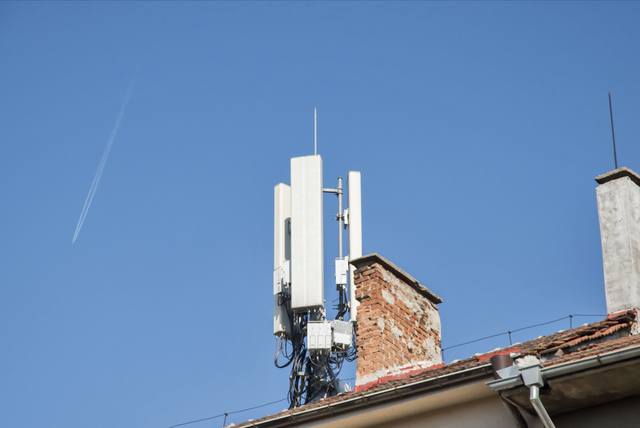Introduction: With the assistance of Fomalhaut Techno Solutions, which is engaged in the disassembly and investigation of smart phones and auto parts, Huawei‘s 5G small base station was disassembled. After disassembly, it was found that China made components accounted for 55% of the cost, which was 7% higher than that of the original large base station. Parts in the United States account for 27% of large base stations, and only 1% of small base stations dismantled this time.
On January 3, it was reported by the Nikkei News that with the assistance of Fomalhaut Techno Solutions, a smartphone/vehicle parts dismantling and investigation company, it had disassembled Huawei‘s 5G small cell (a 5G small cell covering a range of tens of meters to 1 km), and found that the proportion of U.S. parts had dropped to 1%.
According to the report, the proportion of parts made in China in the overall cost of Huawei‘s 5G base stations is more than half, reaching 55% (7 percentage points higher than that of Huawei‘s 5G base stations to be disassembled in 2020), and the proportion of American parts is only 1%. This shows that Huawei has further accelerated the pace of replacing domestic parts under the Sino US technology war.
Source: Network
Data shows that the overall cost of Huawei‘s 5G base stations dismantled in 2020 is estimated to be US $1320, of which 48.2% are Chinese parts and 27% are American parts. For example, FPGA chips come from American manufacturers Lattice Semiconductor and Xilinx. The power management chip comes from Texas Instruments and ON Semiconductor.
In other words, Huawei has reduced the "beauty content" by 26 percentage points in just two years without affecting the equipment performance. Some American enterprises that had cooperated with Huawei for a long time were on the verge of bankruptcy due to the loss of this largest customer. At the same time, during the disassembly in 2020, it was found that the use rate of parts produced locally in China was 48.2%. Two years later, this proportion rose to an astonishing 57%. It is reported that a large number of newly emerging Chinese enterprises have appeared in the list of parts suppliers of Huawei 5G base stations, some of which have been established for only one year.
According to the message, the main chips used in the Huawei 5G mini NodeB dismantled this time are the products of HiSilicon, a chip design company owned by Huawei. However, Fomalhaut speculates that the actual manufacturer of the chip is TSMC, and it is estimated that the chip is the stock chip that Huawei accumulated before upgrading its ban on chip manufacturing in the United States.
However, Huawei‘s remaining chip inventory may not be much. According to the statistics of Counterpoint Research, in the third quarter of 2022, Huawei HiSilicon‘s share in the mobile phone AP market has dropped to zero (0.4% in the second quarter), and Huawei is expected to have exhausted the inventory of mobile phone chipsets. Of course, Huawei‘s 5G base station shipments are much smaller than those of millions of smartphones. Therefore, Huawei may still retain some of the chip inventory required for 5G base stations.
In addition, Huawei‘s LOGO is also printed on some "analog chips" in Huawei‘s 5G mini NodeB. Therefore, it is determined that the chip was developed by Huawei itself, but the manufacturer is unknown. Compared with logic chips, analog chips usually have lower requirements for process technology.
According to Omdia, a British research company, the shipment volume of 5G Small Cells in 2024 is estimated to be 2.8 million units, which will be 3.5 times the level in 2020. Omdia pointed out that in the Small Cell market, the Asia Pacific market accounts for more than 50% of the total, and China is the largest market among them. In 2020, Huawei will account for more than 20% of global shipments, leading competitors such as Ericsson of Sweden and Nokia of Finland.
On the other hand, the latest statistics show that among the mobile phones shipped in the first three quarters of this year, the proportion of 5G mobile phones reached 46%, 4.5 times higher than that two years ago. It is believed that this proportion will increase significantly after the disclosure throughout the year. The wave of 5G is officially coming, and the trend of the world entering the 5G era is inevitable.
In this environment, Huawei‘s 5G business is favored by people from all walks of life. The growth rate of 5G users is fast, while the stock is still large. According to relevant statistics, only 25% of the world‘s total population has enjoyed 5G welfare, and 75% of the market remains to be developed. The huge stock and extremely high growth rate have led to the vigorous development of 5G base station services. Although Huawei‘s mobile phone business almost died out for some well-known reasons. However, the high growth rate of the 5G sector has brought the company much-needed cash flow.
Data shows that Huawei‘s revenue in 2021 will total 636.8 billion yuan. In addition to the consumer business of smartphones, Huawei‘s operator business and enterprise business will account for about 60% of the total.
|
Disclaimer: This article is transferred from other platforms and does not represent the views and positions of this site. If there is any infringement or objection, please contact us to delete it. thank you!
中恒科技ChipHomeTek
|
